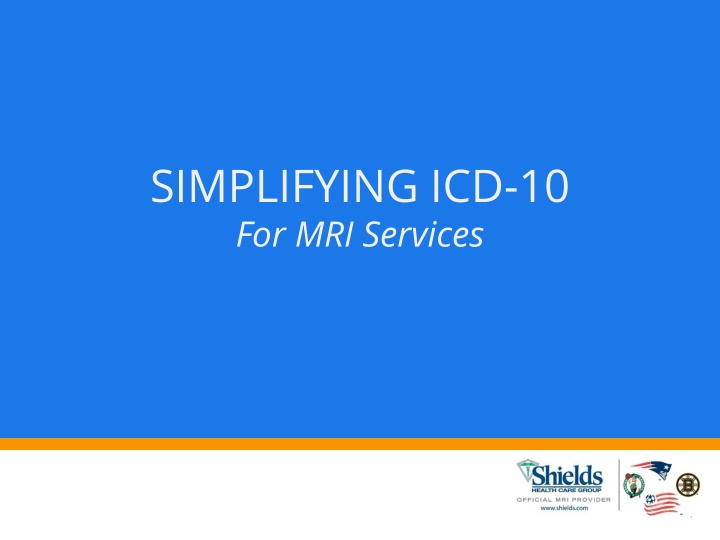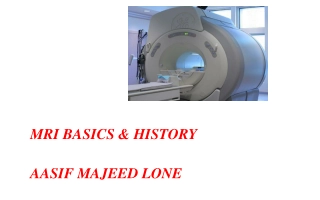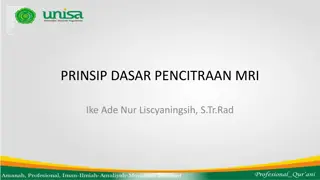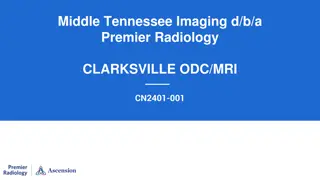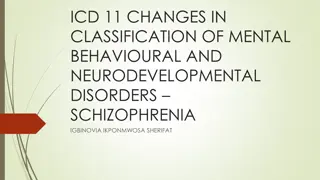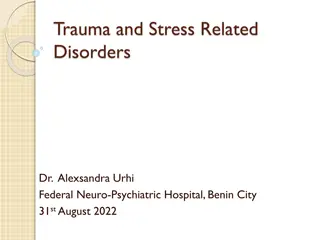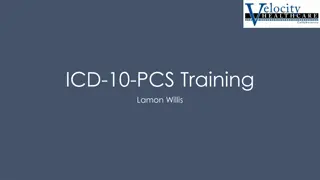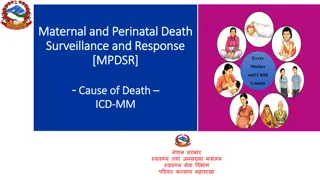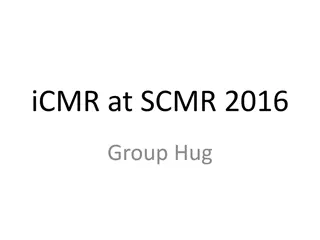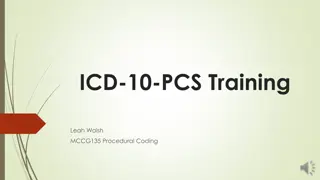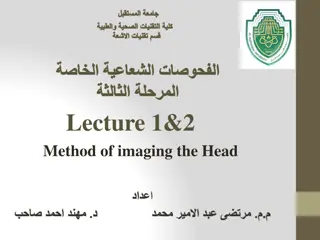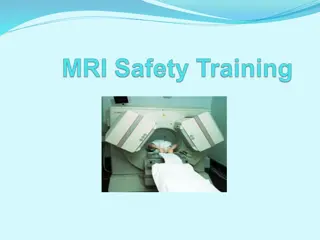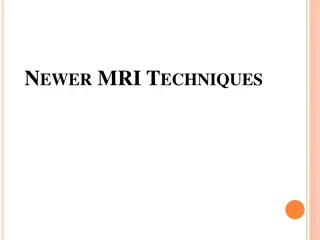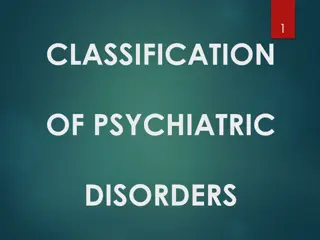Simplifying ICD-10 for MRI Services Overview
Understanding the transition from ICD-9 to ICD-10 is crucial for MRI services. The shift involves more specific information and detailed documentation to improve patient care quality. ICD-10 codes require additional details such as location, severity, mechanism of injury, and history. The key lies not just in the code but in the accompanying story. While ICD-10 changes impact diagnosis codes, CPT coding for outpatient procedures remains unaffected. Utilize resources like Shields.com/ICD10 for support in translating codes. Remember, the narrative is as vital as the code itself.
Download Presentation

Please find below an Image/Link to download the presentation.
The content on the website is provided AS IS for your information and personal use only. It may not be sold, licensed, or shared on other websites without obtaining consent from the author.If you encounter any issues during the download, it is possible that the publisher has removed the file from their server.
You are allowed to download the files provided on this website for personal or commercial use, subject to the condition that they are used lawfully. All files are the property of their respective owners.
The content on the website is provided AS IS for your information and personal use only. It may not be sold, licensed, or shared on other websites without obtaining consent from the author.
E N D
Presentation Transcript
SIMPLIFYING ICD-10 For MRI Services
Snapshot: ICD-9 vs. 1CD-10 ICD-10 ICD-9 CODES 14,000 68,000 Up to 7 alpha or numeric characters CHARACTERS Up to 5 numeric characters Limited inclusion of co- morbidities, complications, severity, and risk INCLUSION OF CO-MORBIDITIES Includes co-morbidities within codes Does not distinguish based on body part laterality (left v. right) Includes laterality when appropriate LATERALITY Combines initial and ensuing encounters Separates codes for initial and subsequent visits TIME OF EVENT
The key to ICD-10 success is not just the code, but the code AND the story.
More information is needed. The goal of ICD-10 is provide more specific information and greater detail that will provide better data to ultimately improve the quality of patient care. Because ICD-10 is more specific, to accurately code a diagnosis, more specific documentation will be required. In addition to the code, we need the STORY: 1. Location/laterality (ie: left, right) 2. Severity of pain (severe, moderate, mild) 3. Mechanism of injury 4. History/context And the clinical notes! What is the BIGGEST change I can expect?
No. The ICD-10 change doesn t affect CPT coding for outpatient procedures. Like ICD-9, ICD-10 are diagnosis codes. Does this impact CPT codes?
Go to shields.com/ICD10 Shields.com/ICD10 is an online resource with featuring an ICD-9 to ICD-10 converter. If you are having trouble with that resource, just give us the ICD-9 code and the story ; our scheduling team can help translate it for you. Remember to the STORY it s even MORE important than the code on its own. 1. Location/laterality (ie: left, right) 2. Severity of pain (severe, moderate, mild) 3. Mechanism of injury 4. History/context What if I don t KNOW the ICD-10 code?
Shields.com/ICD10 Tools and resources for support on the ICD-10 transition Download our cheat sheets of top ICD-9 and ICD-10 conversions based on specialty Download this presentation for reference or office tutorials Use our ICD-9 to ICD-10 (and vice versa) converter 836.0
Describe the pain and injury. If you complete the STORY, our scheduling team can help make that correction. For example, if you order an MRI of the RIGHT shoulder, but provide the ICD-10 code for shoulder pain, leftshoulder, first incident , your story will still look like this: 1. Location/laterality: RIGHT SHOULDER 2. Severity of pain: SEVERE 3. Mechanism of injury: FELL OFF BIKE AND INJURED RIGHT SHOULDER 4. History/context: FIRST INCIDENT We ll see the error, call you to confirm, and fix it What if I put the INCORRECT ICD-10 code?
HmmSort of. We have two great resources to help you: 1. Shields.com/ICD10 features an ICD-9 to ICD-10 converter (and vice versa). Plug in your ICD-9 and your ICD-10 options will appear. Simple! 2. Shields has invested in scheduling software for our team that will help translate ICD-9 codes to ICD-10 codes BUT There is not always an exact translation. ICD-10 is a LOT more specific. Bottom line? We won t leave you hanging. We re here to help you and will do whatever we can to get the correct code into your order and your patient scheduled quickly. Can you TRANSLATE the ICD-9 code to ICD-10 for me?
No way. Our schedulers, our coders, our reimbursement team and our radiologists are ready and prepared for ICD-10 and committed to getting your patients in quickly. If you are having any challenges with ICD-10 ordering or feel like it might impact your patient s appointment, contact me immediately. You and your patients are our TOP priority. Will this slow down the MRI SCHEDULING process?
Were preparing to help YOU. When it comes to helping YOU with ICD-10, here s what you can expect from us: Shields.com/ICD10 New written order forms with a section on ICD-10 (the STORY) ICD-10 cheat sheets with frequently used ICD-9 codes by specialty New ONLINE order form coming soon Like you, Shields is learning ICD-10 and introducing new processes internally to ensure we are set up for success. This includes: New technologist interview forms Radiologist training Scheduler training Practice tests What is SHIELDS MRI doing to prepare for ICD-10?
New online order form October 2015 New user experience Access from shields.com homepage AND Shields Express Link Drop-down list of doctors Smart ICD-10 tool it will translate it for you! Option to add attachment for clinical notes
MSK Example: MRI of the knee for meniscus tear ICD-10 ICD-9 836.0 S83.221A Tear of medial cartilage or meniscus of knee, current Peripheral tear of medial meniscus, current injury, right knee, initial encounter CO-MORBIDITIES LATERALITY TIME OF EVENT
MSK Example: MRI of the shoulder for rotator cuff sprain ICD-10 ICD-9 840.4 Rotator Cuff (capsule) sprain S43.422A Sprain of left rotator cuff capsule, initial encounter CO-MORBIDITIES LATERALITY TIME OF EVENT
Neuro Example: MRI of the orbits ICD-10 ICD-9 H53.131 Sudden vision loss, right eye 368.11 Sudden vision loss CO-MORBIDITIES LATERALITY TIME OF EVENT
Neuro Example: MRI of the neck ICD-10 ICD-9 784.2 R22.1 Localized swelling, mass and lump head and neck Localized swelling, mass and lump neck CO-MORBIDITIES LATERALITY TIME OF EVENT
Thank you! We re here to help.
